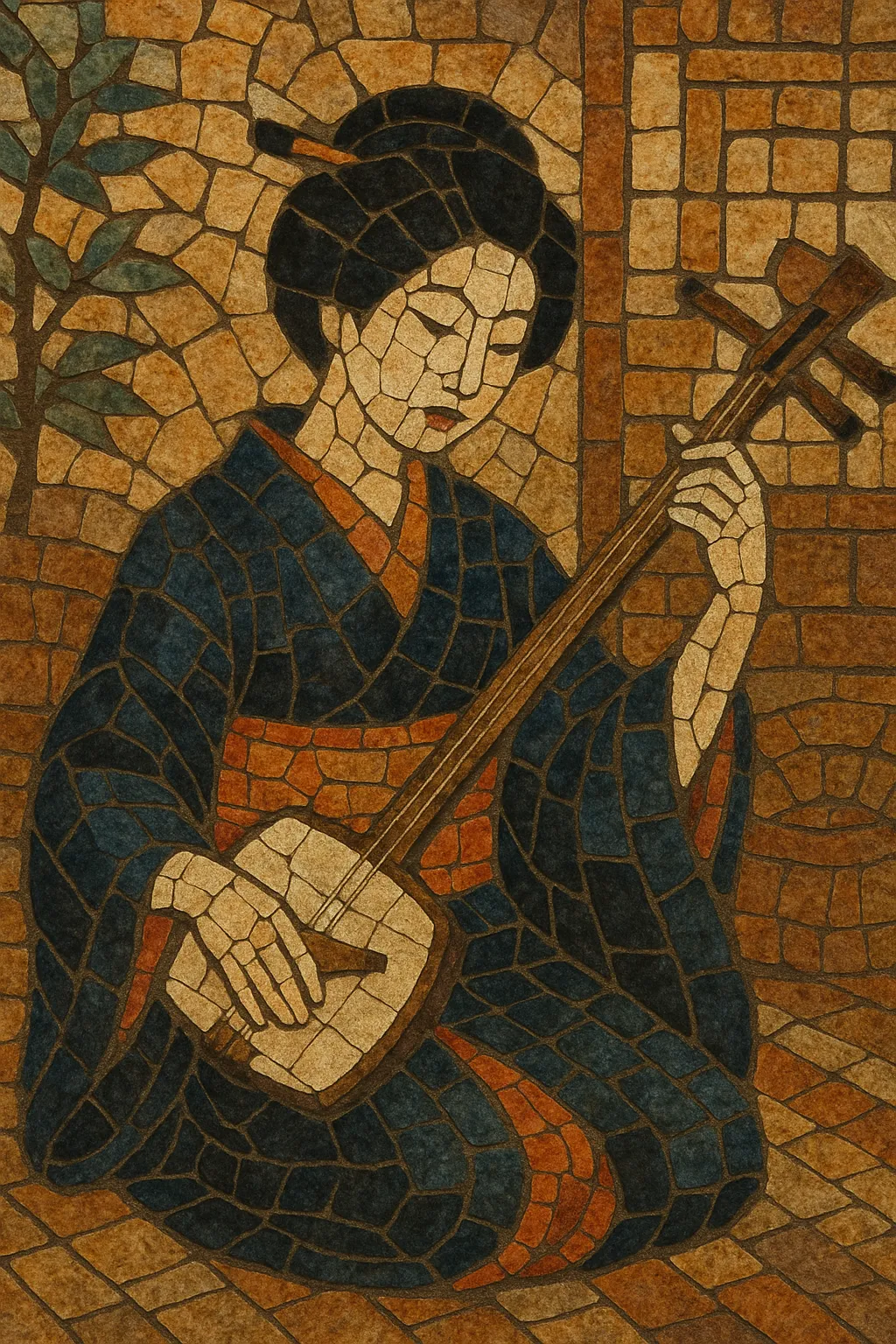Kouta (小唄, “little song”) is an intimate Japanese shamisen-vocal genre that crystallized in the late Edo and early Meiji eras.
It is typically performed by geisha in teahouse settings, featuring concise, poetic lyrics and subtle vocal ornamentation over sparse shamisen accompaniment.
Unlike the grand, theatrical idioms of kabuki-related music, kouta prizes understatement, wordplay, and nuance. The songs are short, often strophic, and draw on seasonal imagery, love, and everyday urban life. Melodically, kouta favors pentatonic modalities common to Japanese traditional music (especially in- and yo-based scales), flexible tempo, and the expressive use of ma (silence/space).
Kouta emerged as a refined urban song practice in the late Edo period and matured through the early Meiji era. Rooted in the geisha arts, it evolved from earlier chamber and theatrical song traditions—particularly min'yō (folk song), jiuta (Kyoto–Osaka chamber songs), kumiuta (koto song suites), and the kabuki-associated nagauta. In contrast to the expansive theatrical repertoire, kouta emphasized brevity, intimacy, and lyrical subtlety suitable for small rooms (zashiki) and convivial gatherings.
During the 19th century, kouta became a hallmark of geisha musical culture in districts such as Edo/Tokyo’s Yoshiwara and Kyoto’s Gion. Performers cultivated refined vocal delivery with nuanced ornamentation (including kobushi inflections), delicate shamisen textures, and sophisticated textual imagery. The idiom codified a repertoire that balanced elegant entertainment with poetic art, maintaining flexible rhythm and expressive timing rather than strict metric regularity.
Into the 20th century, kouta informed emerging popular styles, contributing melodic turns, themes, and vocal color to ryūkōka and later enka and kayōkyoku. While its core practice remains tied to traditional training and geisha culture, contemporary artists and culture-bearers continue to preserve and teach kouta, keeping its repertoire present in classical concerts, cultural festivals, and heritage arts education.


